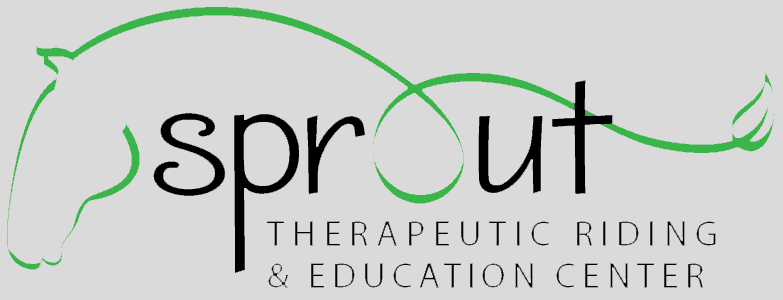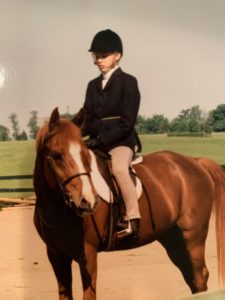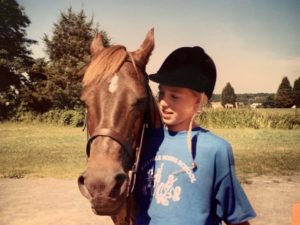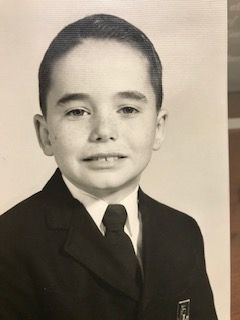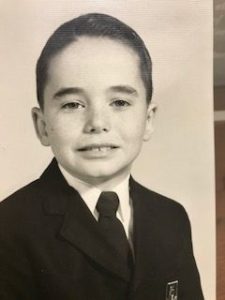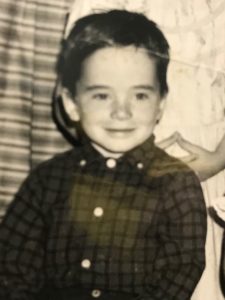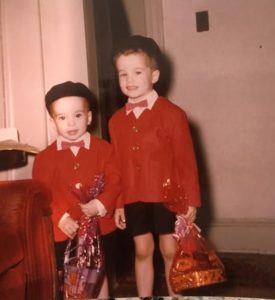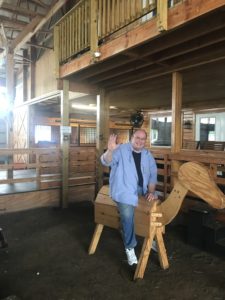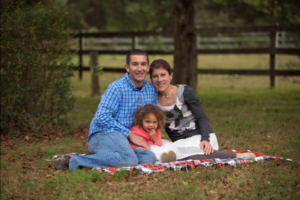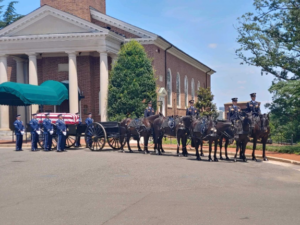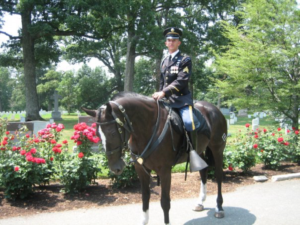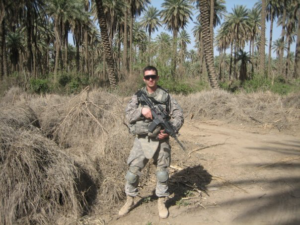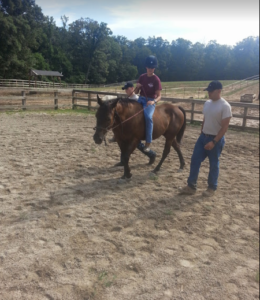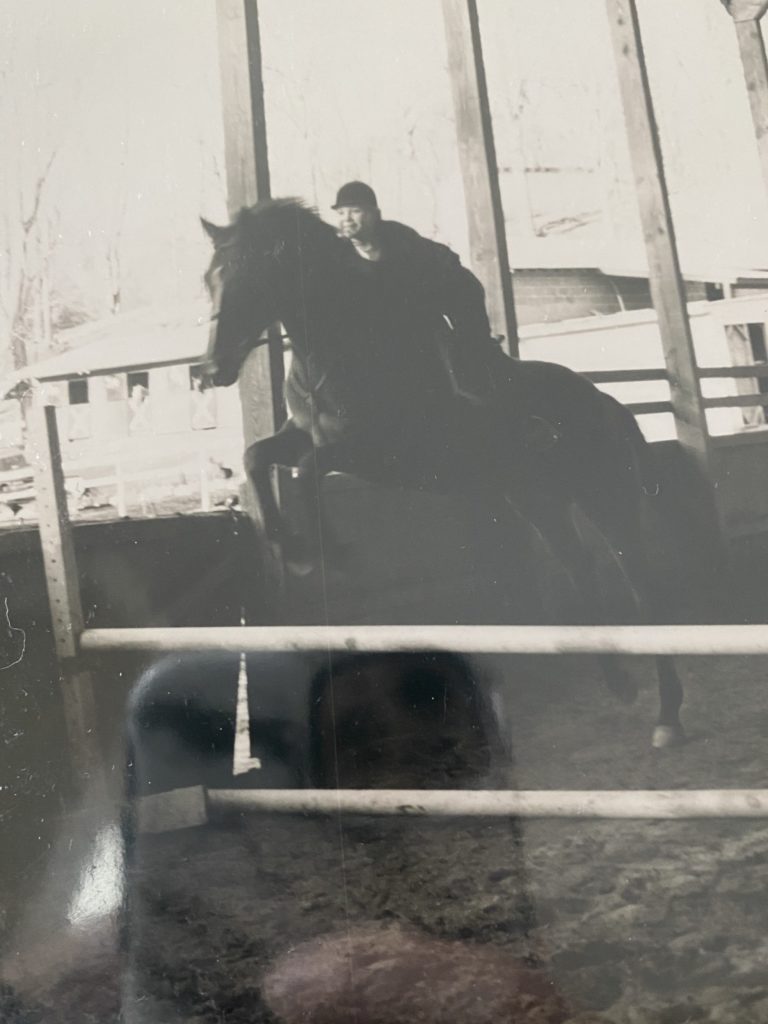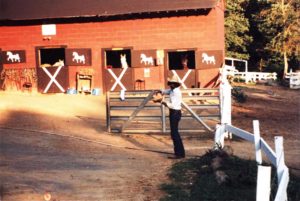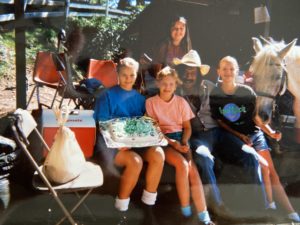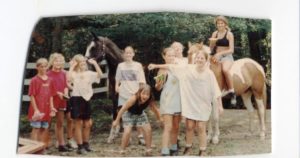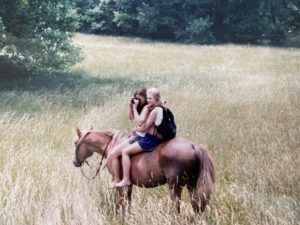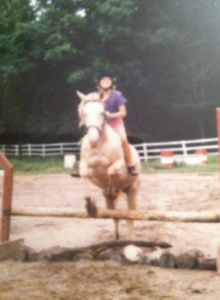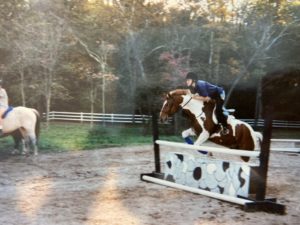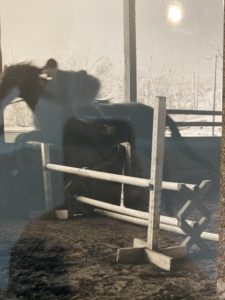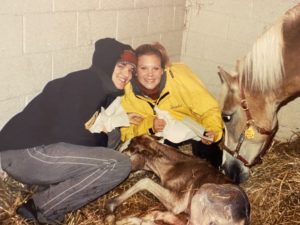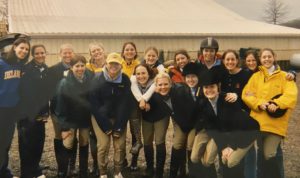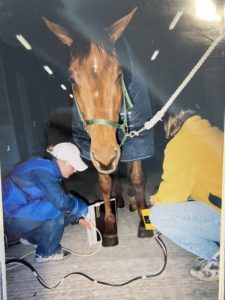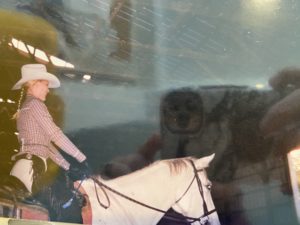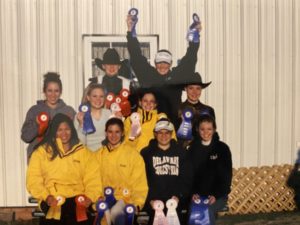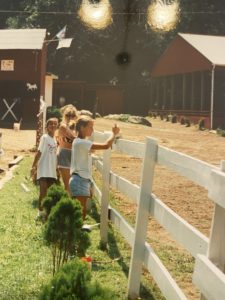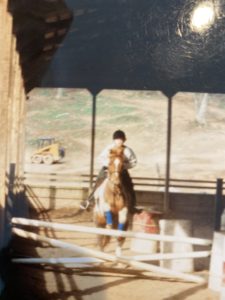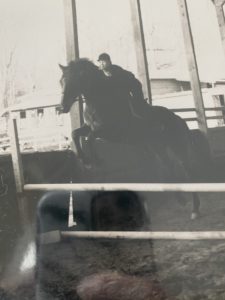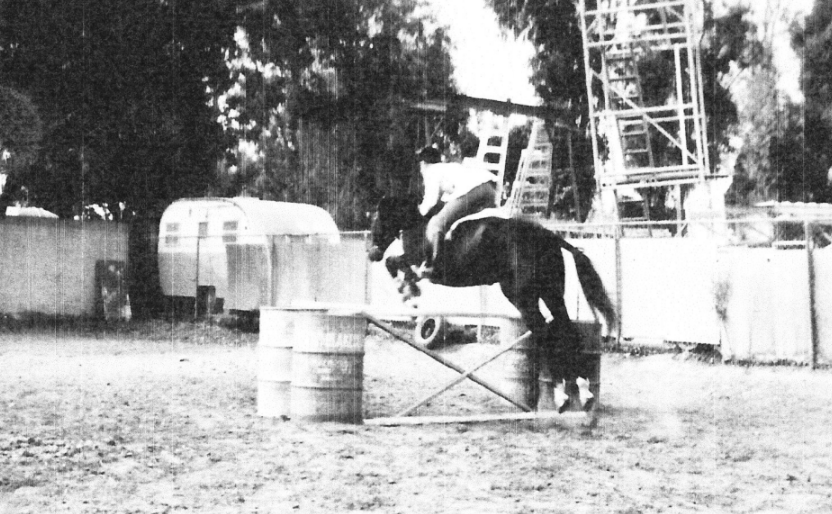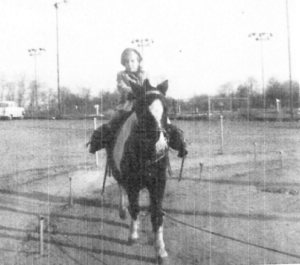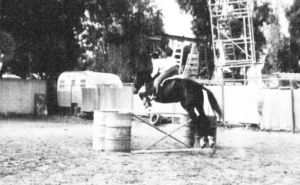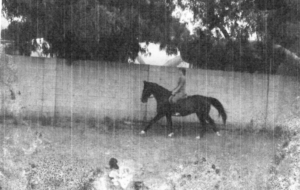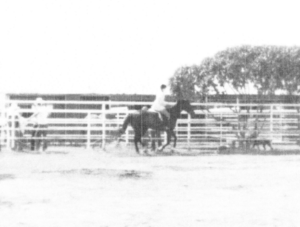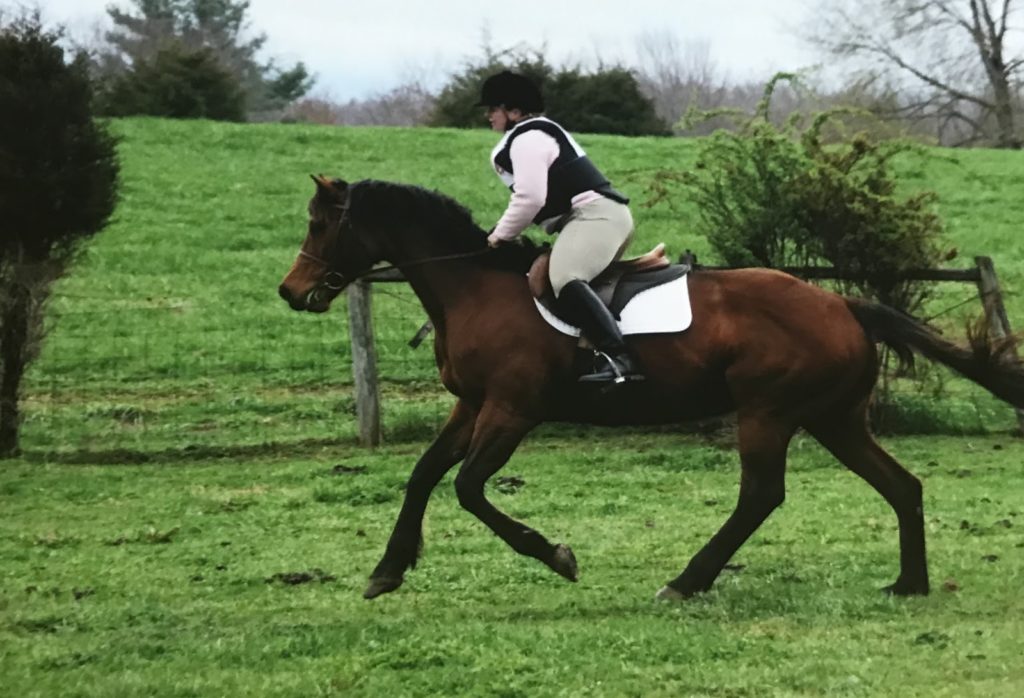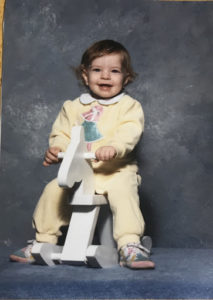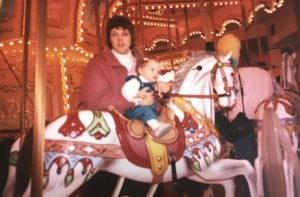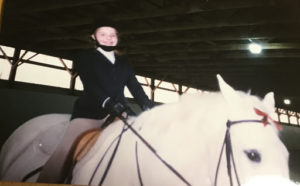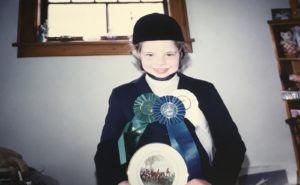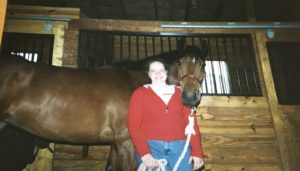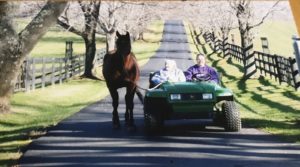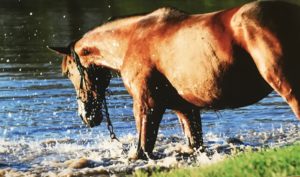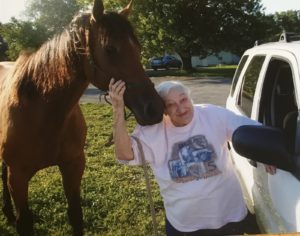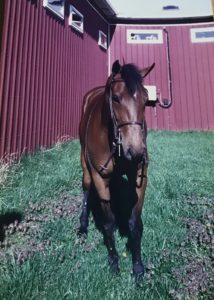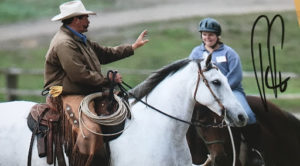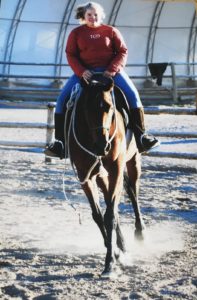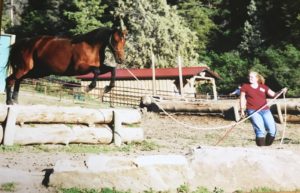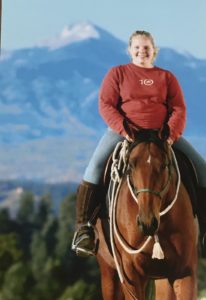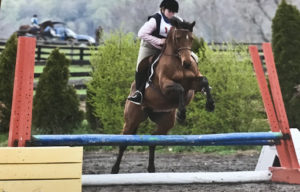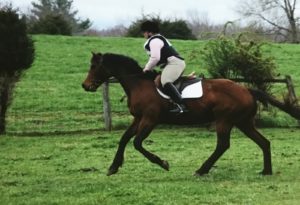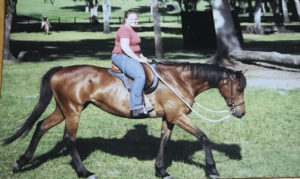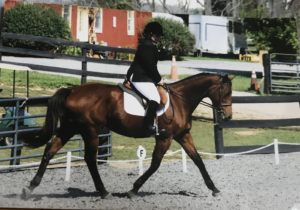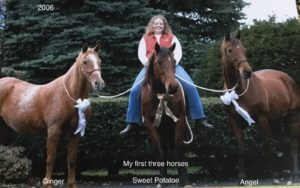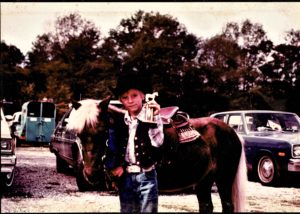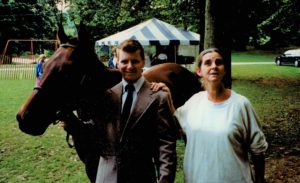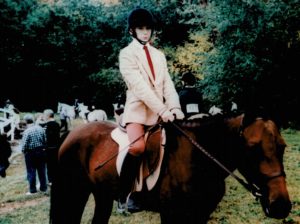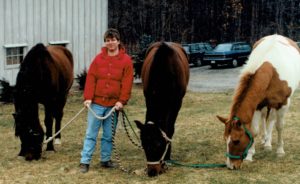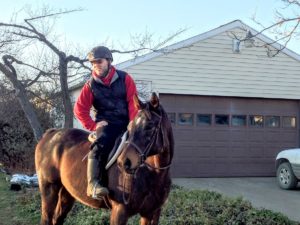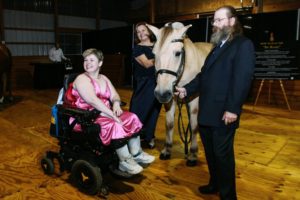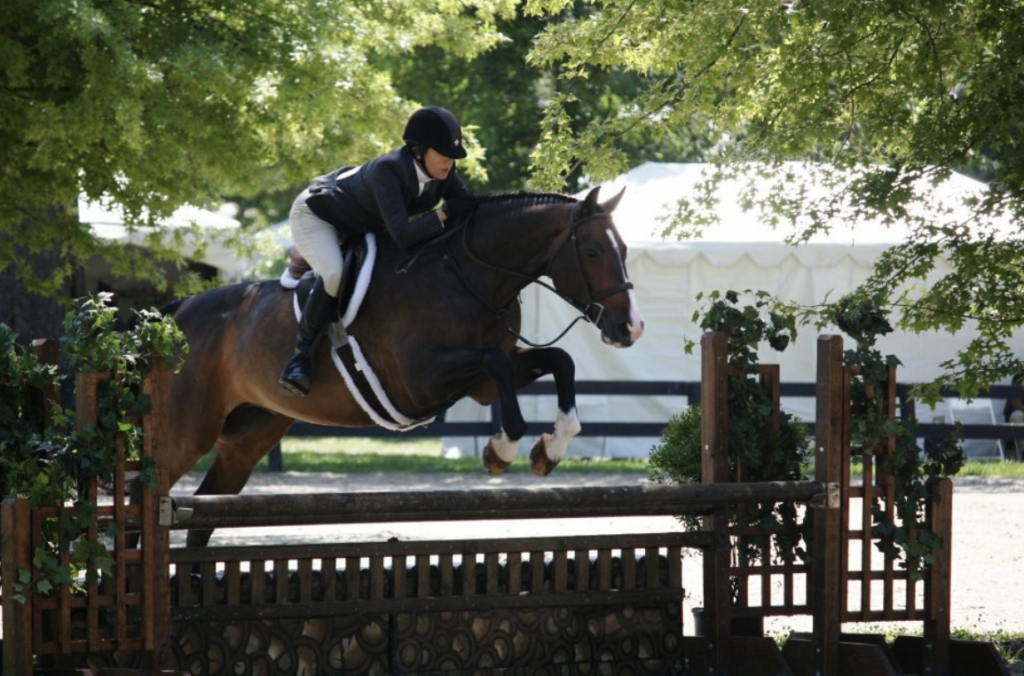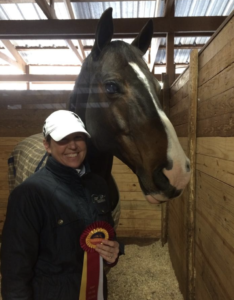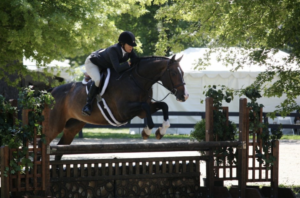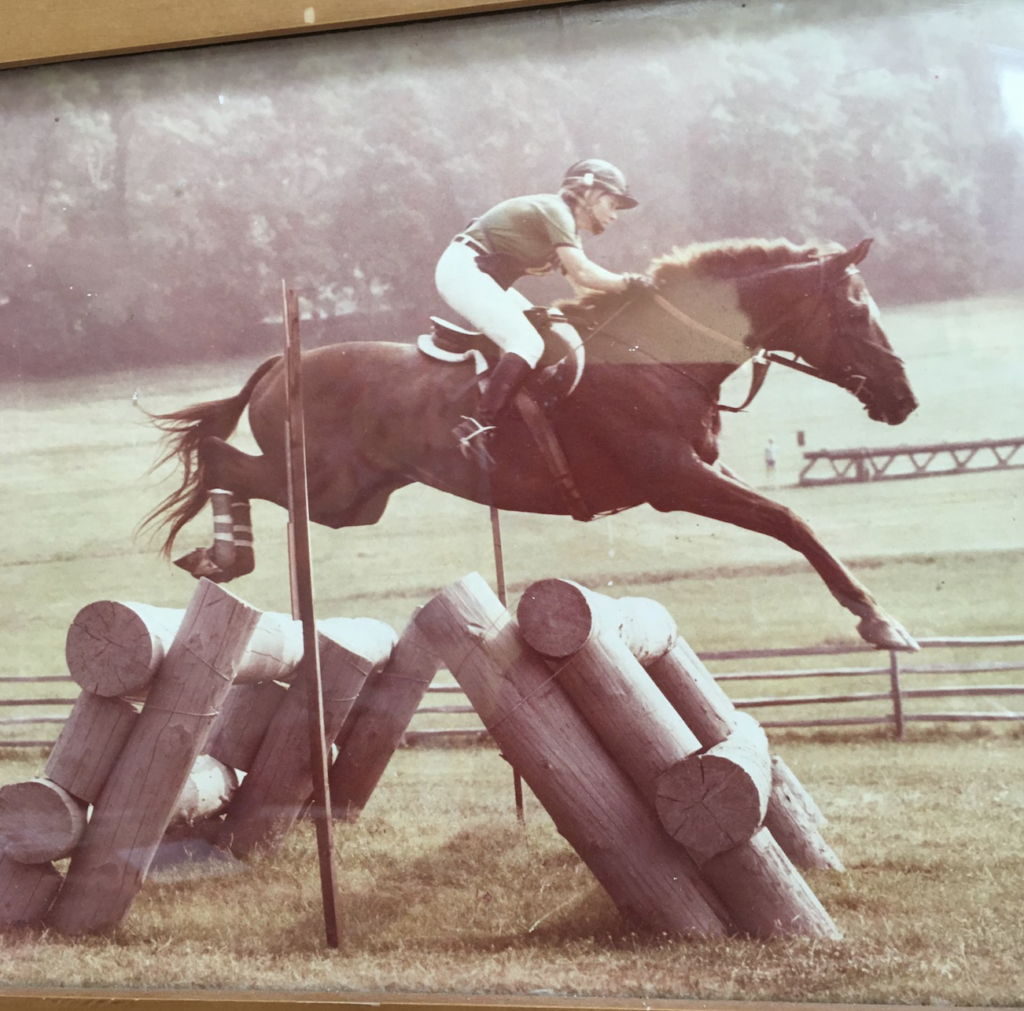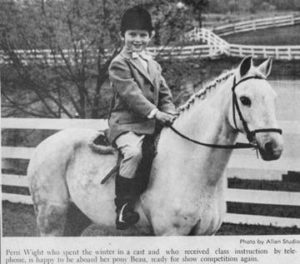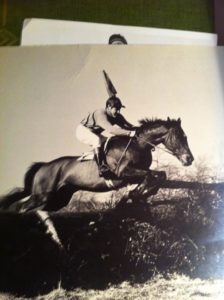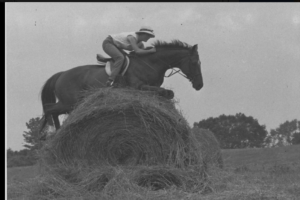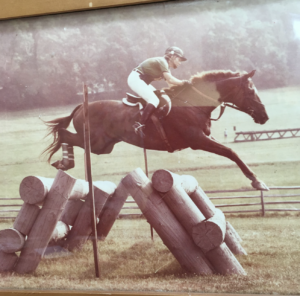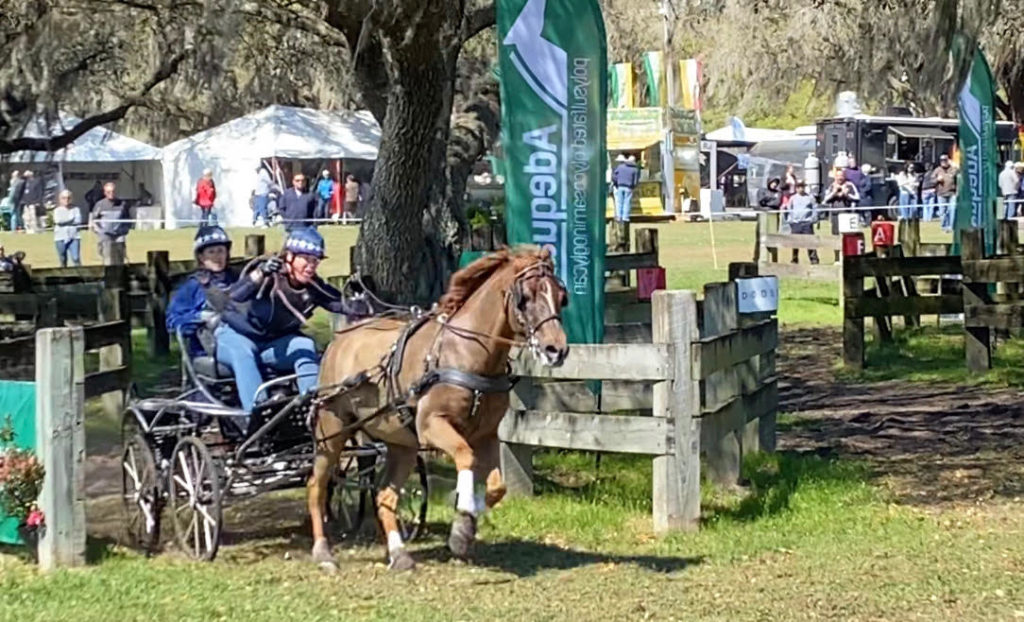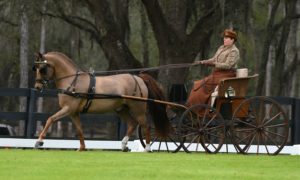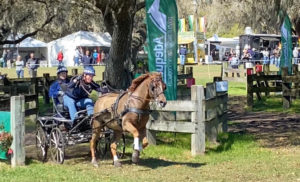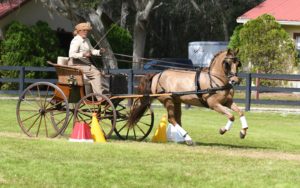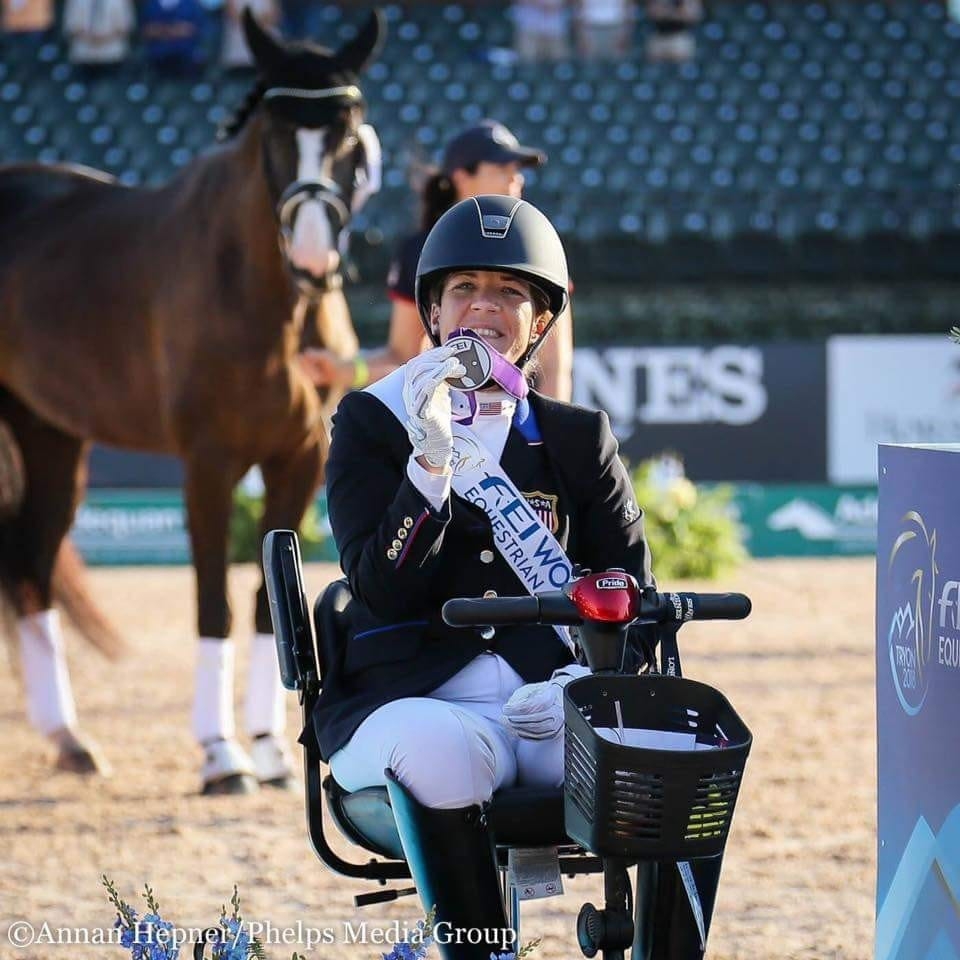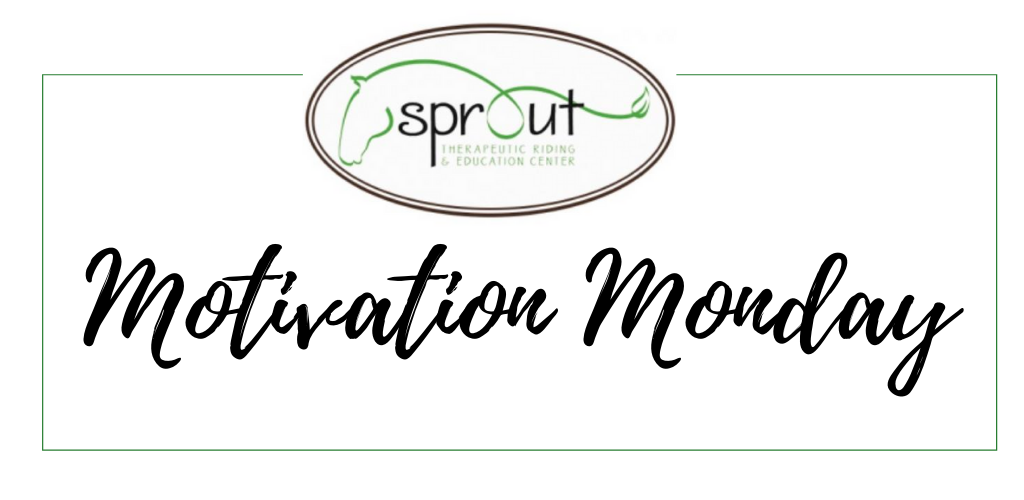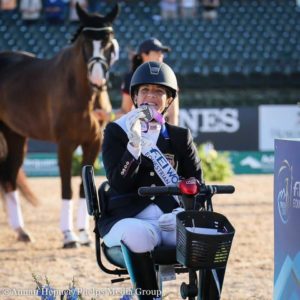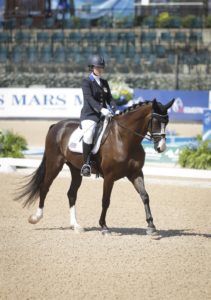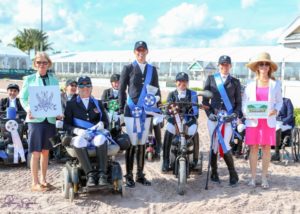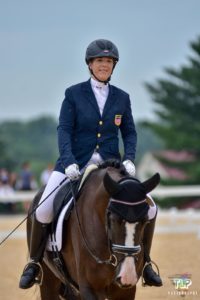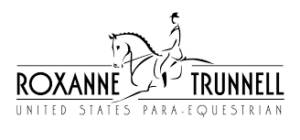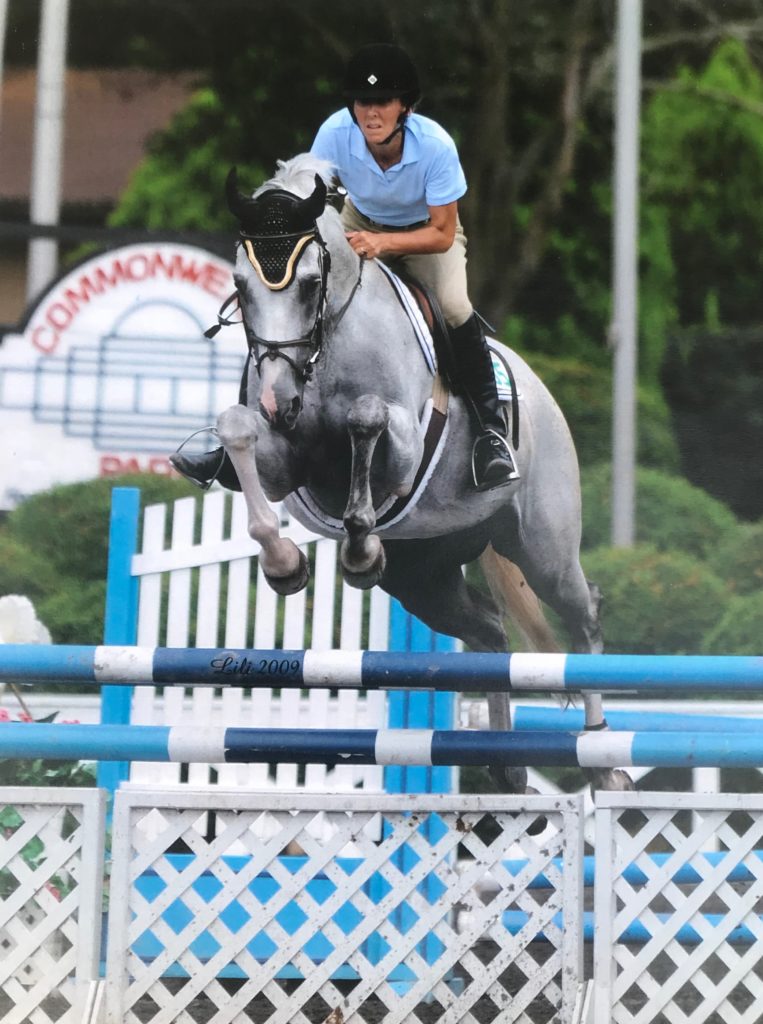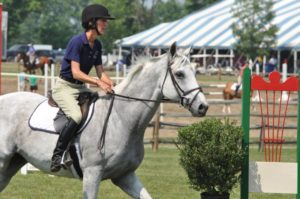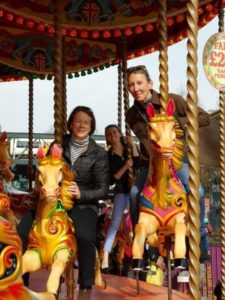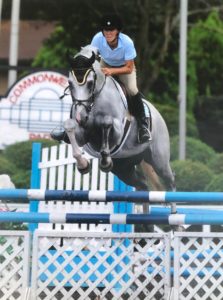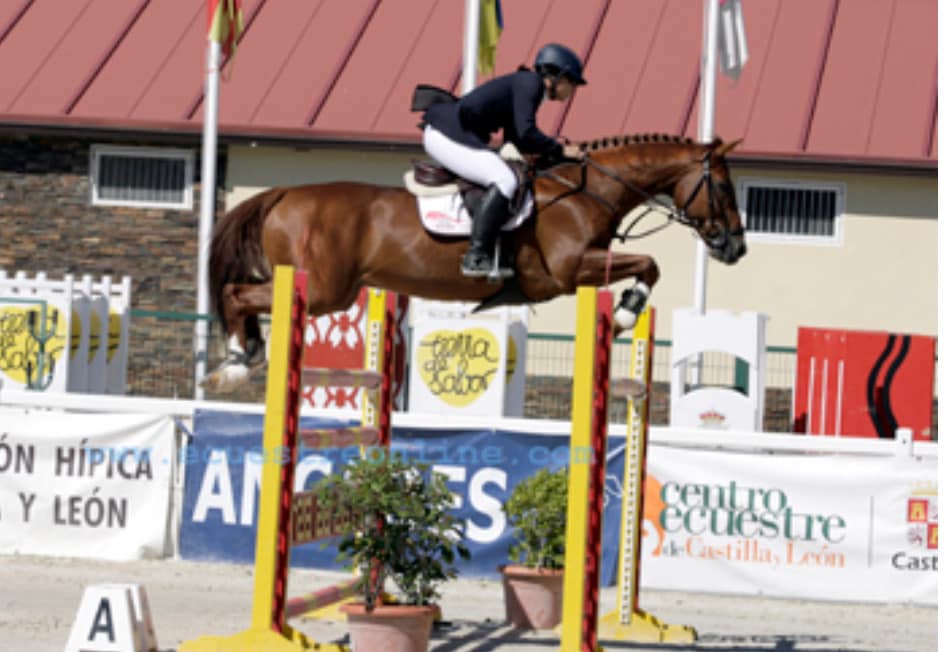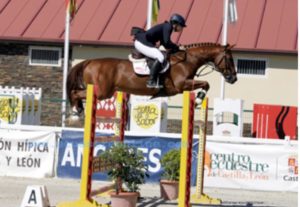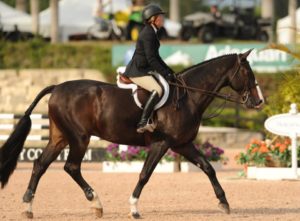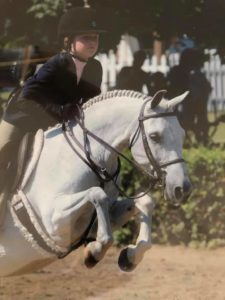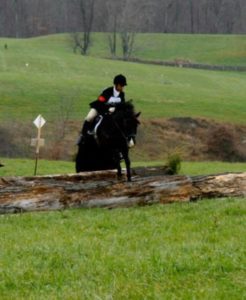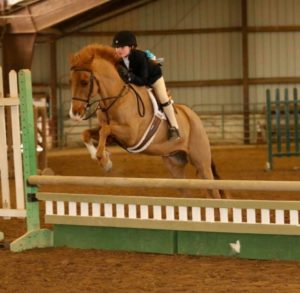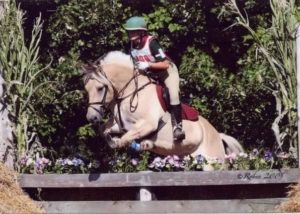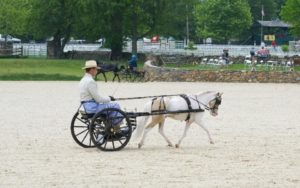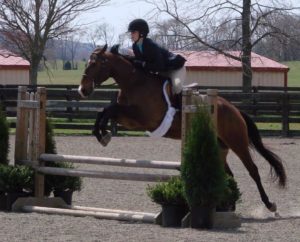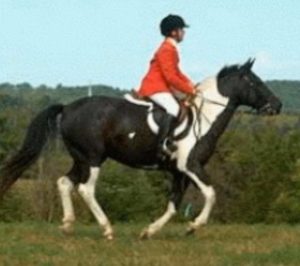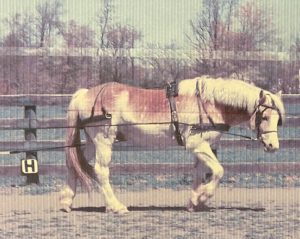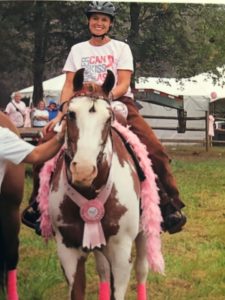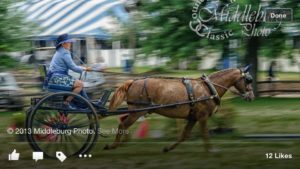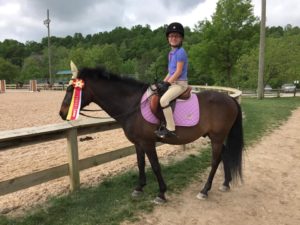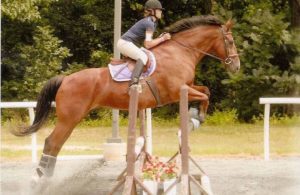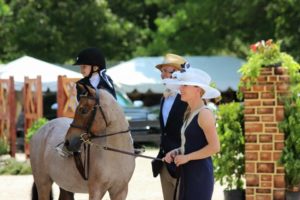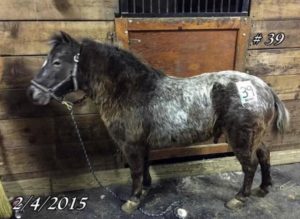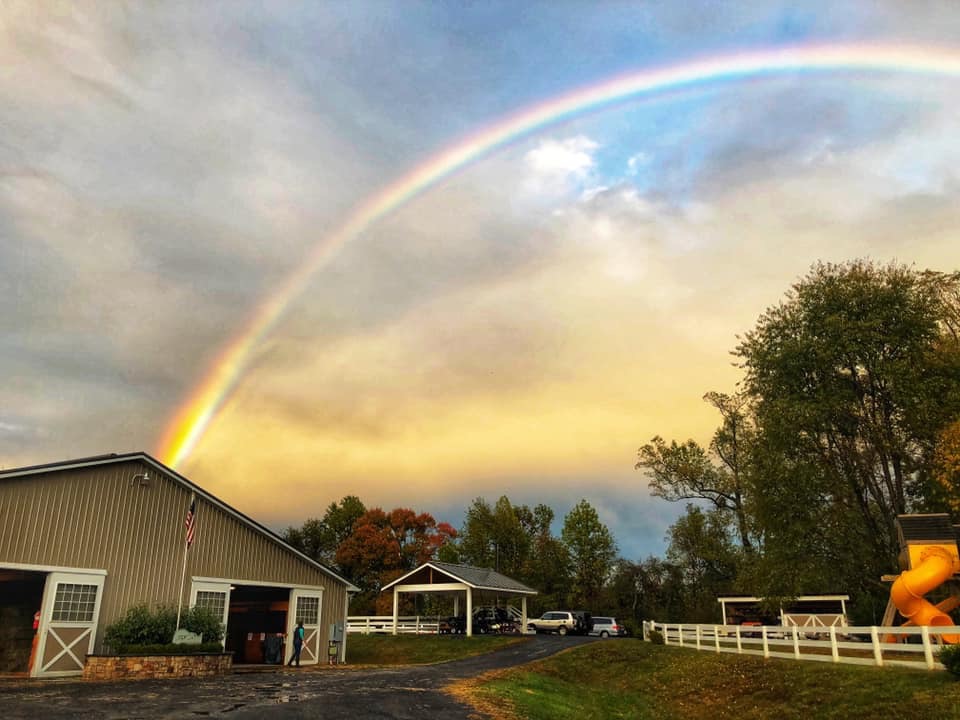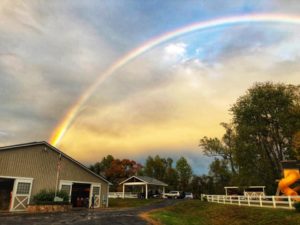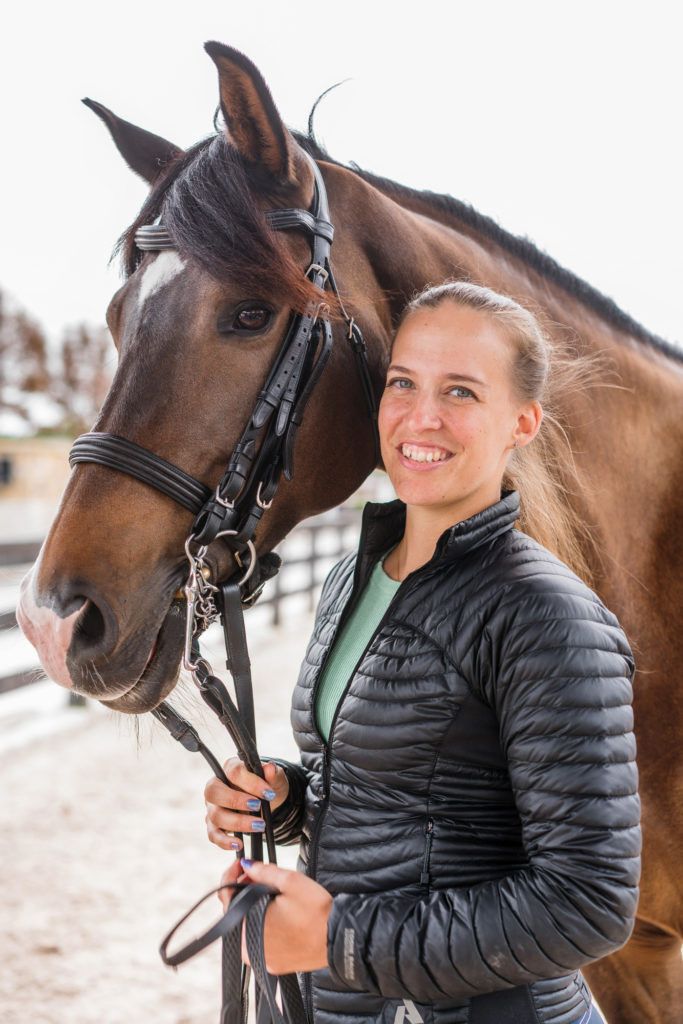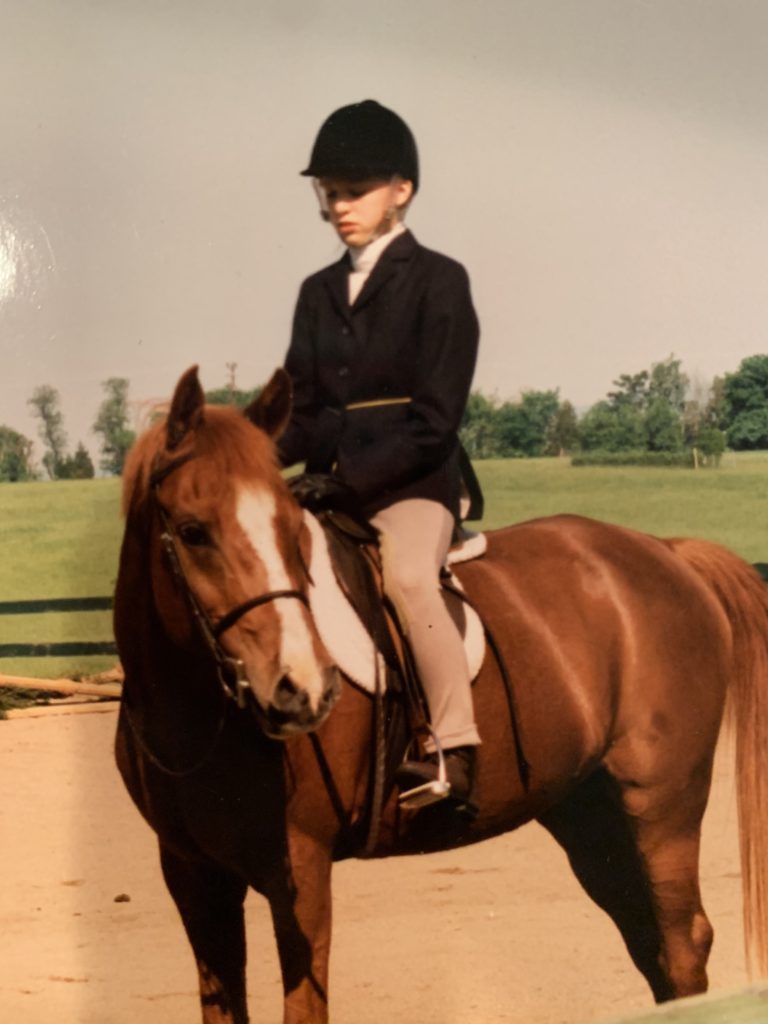
A Life The Barn Builds
By: Heather Henken
I distinctly remember feelings of both excitement and nerves while walking into a musky barn one chilly afternoon for my first ever riding lesson. I was 10 years old and I had longed for something more than a pony ride for quite some. That first lesson we spent a large portion of our time grooming and tacking. I remember using all of my might to try to fasten the girth and then watching my instructor tighten it with ease. The trek across the indoor arena reminded me of walking on a beach, except I was navigating the deep sand in boots and layers of clothes, rather than a swimsuit and flip flops. My helmet shifted over my eyes (note improper fit) as I mounted the horse and I learned about sitting balanced in the saddle. As my horse walked in a circle around the instructor on the lung line, I got to learn and practice stopping my horse and I even got a chance to try to stand up in my stirrups. The whole thing was simply perfect in my eyes, and while we were at the barn for over an hour the time went by way too fast.
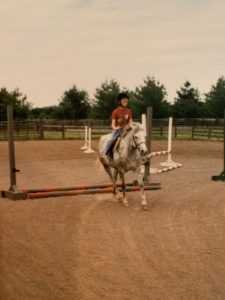
While that first lesson was a 1 off, I fell in love with horses and riding and I couldn’t wait to ride again. Soon thereafter, my younger sister and I got to start riding lessons at a local lesson barn. I started lessons there on a grey pony named Romeo. I took several lessons on Romeo, learning to trot and post. Romeo even took me over my first jump! As I started becoming more skilled I got to ride more and more horses, each of them very different from the last. Each of them challenged my skill.
I very quickly was obsessed with horses. I always dreamed about being at the barn when I was not there. I always waited eagerly for the next issue of my Young Rider magazine to arrive in the mail. I drew pictures of horses and frequently designed blueprints of barns and fields that I would one day own (this I’m still working on). I always had buckets, brooms, mops, and whatever else I could find set up in my backyard as jumping courses and I would drag our family dog over until we were both exhausted. I longed to spend a summer at sleep away riding and I would wish daily for my own horse and beg my parents for one every Birthdays and Christmas.
Once I was in middle school, the person that I took lessons from moved to a new barn and over the years she faded out her lesson program to work outside of the barn. Around that same time my parents were separating and the barn became my refuge. It didn’t matter if I was grooming, feeding, turning out, clean stalls, clean tack, riding, or whatever else needed done, I was happy to do it, the barn was my happy place. The lady that ran the barn appreciated my help around the barn so much that she would drive out of her way on her way home from work to pick me up several days a week and drive me home when we were done. I got many hours at the barn during that time frame which over the years turned into me working with young ponies that she bred. A lot of what I did with the ponies was trial and error, I would go slow, starting by leading them around the ring, doing lots of ground work to get them comfortable, then adding tack piece by piece over the weeks. I would work the ponies up to standing near a step and gradually start introducing them to weight in the saddle on their back. Before long we were trotting and cantering around. I loved this process, slow and steady, soft and forgiving, this way the ponies would trust me. Doing this independently made me proud. I ended up starting many ponies and a hand full of horses in my later teen years. I never stayed in contact or followed were the horses went but throughout my career I would occasionally run into them at shows or hear that they have become lesson ponies.
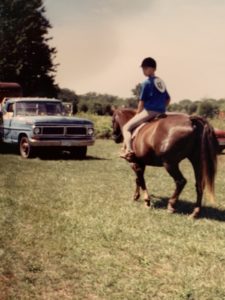 When I turned 16 and got my drivers license I spent even more time at the barn. Now that I could drive, I got a job at show hunter barn, which introduced me more into the professional world of horses. Working in a beautiful clean facility with really nice show horses was very different from my prior horse experiences. I was asked if I wanted to be a show groom and travel with the horses to shows (a totally foreign concept that I didn’t even know existed). I thought to myself, do people actually take horses to shows and stay for several days? How? I had no idea what or how this worked but I was eager to experience it! This led to countless long weekends of staying in hotels, waking up well before the sun came up and working to dark. As time went by, I was trusted with more and more responsibility. One of the most interesting horse shows I worked at was the Washington International Horse Show, because this show, the horses layover at a different facility and then ship in to DC on 18 wheelers. The first time handling a fancy horse on DC street and bathing a horse in a parking garage was something else! This job really allowed me to network and learn from some of the best professionals in the area.
When I turned 16 and got my drivers license I spent even more time at the barn. Now that I could drive, I got a job at show hunter barn, which introduced me more into the professional world of horses. Working in a beautiful clean facility with really nice show horses was very different from my prior horse experiences. I was asked if I wanted to be a show groom and travel with the horses to shows (a totally foreign concept that I didn’t even know existed). I thought to myself, do people actually take horses to shows and stay for several days? How? I had no idea what or how this worked but I was eager to experience it! This led to countless long weekends of staying in hotels, waking up well before the sun came up and working to dark. As time went by, I was trusted with more and more responsibility. One of the most interesting horse shows I worked at was the Washington International Horse Show, because this show, the horses layover at a different facility and then ship in to DC on 18 wheelers. The first time handling a fancy horse on DC street and bathing a horse in a parking garage was something else! This job really allowed me to network and learn from some of the best professionals in the area.
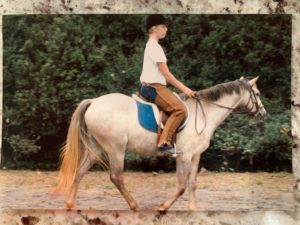 After leaving for 1 year attending a 4 year college I moved back home to work and take classes at the community college and continued to work at the show barn. I soon landed a job with housing at Virginia Equine Imaging where I continued to develop a passion for detailed horse care. I learned so much working alongside Dr. Allen and Dr. Johns. I loved working in the clinic assisting such amazing horses. I got the pleasure of working with some of the world’s most talented horses like Teddy O’Conner. I got to do things like radiographs, bone scans and MRI’s as well as lots of sterile preps for injections and jogging horse after horse down the aisle. I also got to spend time with vets on the road traveling around to some stunning stables. During this time I also got to work with some of the Allen families personal hunt horses. I absolutely adored legging them up and helped keeping them fit for hunting because I got to ride through some of the most beautiful countryside.
After leaving for 1 year attending a 4 year college I moved back home to work and take classes at the community college and continued to work at the show barn. I soon landed a job with housing at Virginia Equine Imaging where I continued to develop a passion for detailed horse care. I learned so much working alongside Dr. Allen and Dr. Johns. I loved working in the clinic assisting such amazing horses. I got the pleasure of working with some of the world’s most talented horses like Teddy O’Conner. I got to do things like radiographs, bone scans and MRI’s as well as lots of sterile preps for injections and jogging horse after horse down the aisle. I also got to spend time with vets on the road traveling around to some stunning stables. During this time I also got to work with some of the Allen families personal hunt horses. I absolutely adored legging them up and helped keeping them fit for hunting because I got to ride through some of the most beautiful countryside.
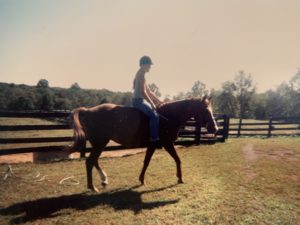 These few years were exhausting. I worked 3 days at the clinic and 2-4 days at the show barn depending on if we were on the road showing that week or not. I took night classes after work, which usually started at 7 and ended just before 10. Doing this much wore me out and it took a toll on my body. My allergies continued to worsen. I would have contact allergies from hay and horsehair would put me in hives, eyes that would itch and swell until they were bloodshot and I was having asthma attacks in the middle of the night. I did eventually finish up my associate’s degree and I decided I would finish a 4 year degree to take a step away from being in the barns all the time to give my body a break. I moved south and picked a college based on location where I could still work a little with Dr. Johns when she traveled south and continued to assist the appointments she had in the area.
These few years were exhausting. I worked 3 days at the clinic and 2-4 days at the show barn depending on if we were on the road showing that week or not. I took night classes after work, which usually started at 7 and ended just before 10. Doing this much wore me out and it took a toll on my body. My allergies continued to worsen. I would have contact allergies from hay and horsehair would put me in hives, eyes that would itch and swell until they were bloodshot and I was having asthma attacks in the middle of the night. I did eventually finish up my associate’s degree and I decided I would finish a 4 year degree to take a step away from being in the barns all the time to give my body a break. I moved south and picked a college based on location where I could still work a little with Dr. Johns when she traveled south and continued to assist the appointments she had in the area.
I finished my bachelor’s degree and moved to Arlington and later got married. After not getting an equine insurance job that I interviewed for, I took a sales job in DC. For several years I really was not around horses or the barn except to substitute teaching some lessons or fill in for a groom that was out.
One afternoon, in the middle of DC’s hustle and bustle, I got a call from the Equine Insurance Agency that I interviewed at previously. They had a position open and they wanted to hire me! I was beyond thrilled, because I had longed for a job that included my love for horses, but didn’t involve me being in a barn daily due to my allergies.
A year or so later my husband and I bought a house in Warrenton and with the shorter commute I was looking to spend a little time around horses again to get “my fix”. This is when I came across Sprout. It was 2013 and I started volunteering one night a week after work. I immediately fell in love with everything about Sprout. Several years later I finally felt that I had the experience and the time to pursue getting certified to teach therapeutic riding and made a commitment to teach 1 night a week after work. I really enjoyed everything that teaching therapeutic riding had to offer.
After starting a family, it became clear, I wanted to focus on things that I found the most gratifying. I decided to leave my full time job as an insurance agent to spend more time doing the things that I care most about.
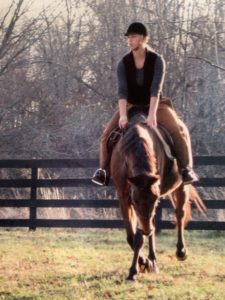 My time with horses has ingrained in me a work ethic and drive and highlighted my passion for animals. I always dream of having a fancy horse and showing but that is not what keeps me interested. By the time I was about 14, horses were no longer funded by my parents. I occasionally had an opportunity to show but mostly I worked behind the scenes, and I was ok with that. I worked to be able to learn the art of riding and horsemanship from so many wonderful people. My opportunities and experiences came from having people believing in me and giving me that chance to try and I truly believe that’s what got me to where I am today. As an instructor at Sprout, I am now grateful to be in a position to allow students to take those chances, to try, to work through challenges. And with that, I hope that their time in the barn can be as gratifying as mine and take away lessons, experiences and skills that help them in all aspects of life.
My time with horses has ingrained in me a work ethic and drive and highlighted my passion for animals. I always dream of having a fancy horse and showing but that is not what keeps me interested. By the time I was about 14, horses were no longer funded by my parents. I occasionally had an opportunity to show but mostly I worked behind the scenes, and I was ok with that. I worked to be able to learn the art of riding and horsemanship from so many wonderful people. My opportunities and experiences came from having people believing in me and giving me that chance to try and I truly believe that’s what got me to where I am today. As an instructor at Sprout, I am now grateful to be in a position to allow students to take those chances, to try, to work through challenges. And with that, I hope that their time in the barn can be as gratifying as mine and take away lessons, experiences and skills that help them in all aspects of life.
